The Worldbuilder
a small neighbourhood...a little world of our own, close-packed and insulated like ants in an ant-hill, or bees in a hive, or sheep in a fold, or nuns in a convent, or sailors in a ship; where we know every one, are known to every one, interested in every one, and authorised to hope that every one feels an interest in us.
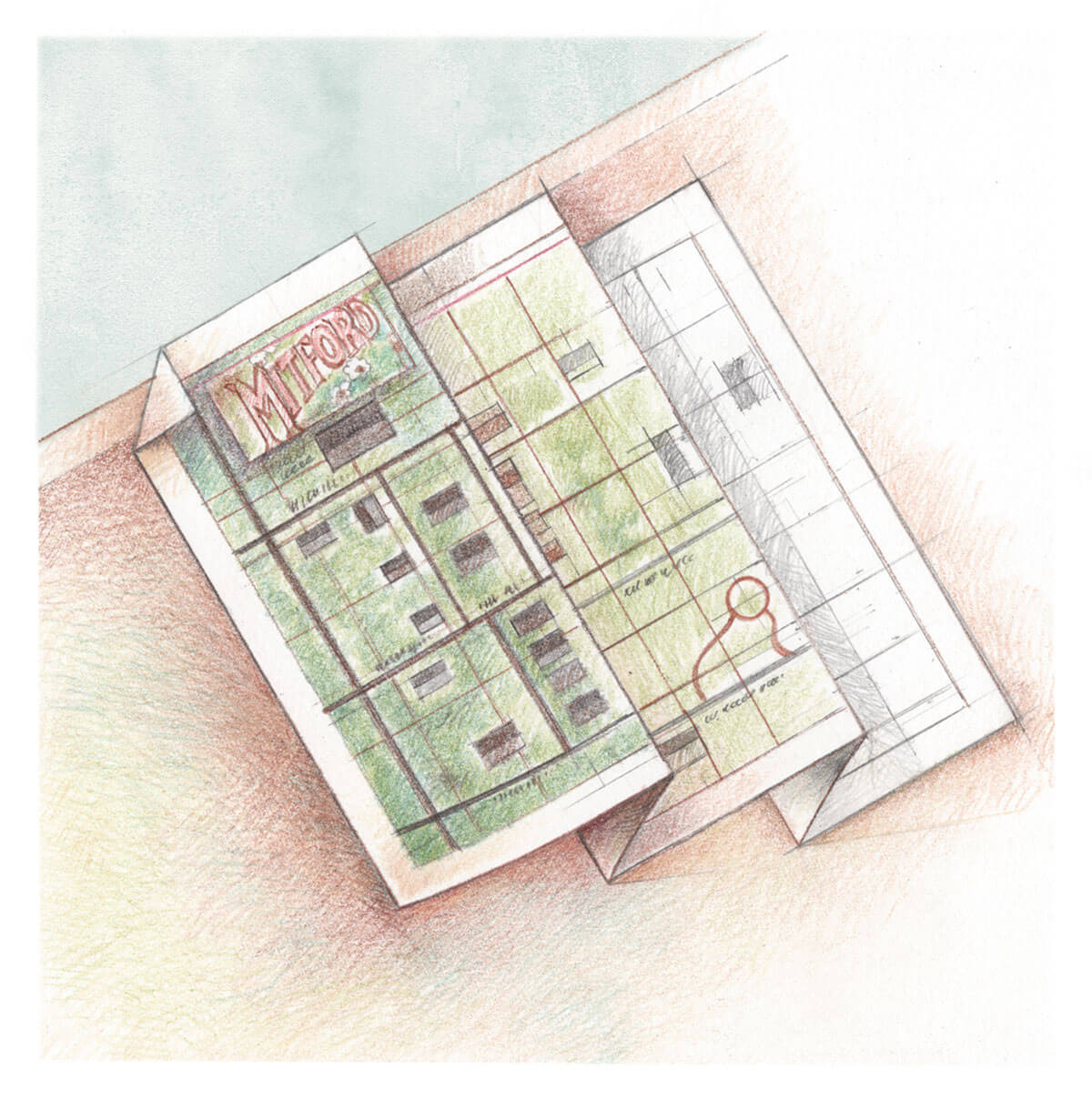
The story goes that Mitford came to Jan Karon in a dream. After leaving her job in advertising in the late 1980s to pursue a career as an author, Karon struggled to realize a story that would communicate her view of the world to her audience until, one night, a vision of an Episcopal priest and his homely town unfolded in her mind, and Father Tim Kavanagh and Mitford materialized.
From Middle Earth to Hogwarts, the world that an author creates is a vital element of popular genre fiction, but Karon’s Mitford proves that effective “worldbuilding” does not require magic and monsters to inspire the loyalty of readers. Drawing from the practical and creative wells cultivated in her advertising work, as well as from her experiences of growing up in and returning to the South, Karon began building Mitford from the earliest stories forward, resulting in a world that extends today well beyond the novels. Built mostly by Karon, with several contributions by others, Mitford has spread to a cookbook, bedside reader, quotation collections, a devotional manual, a play and television film, and even The Mitford Museum.
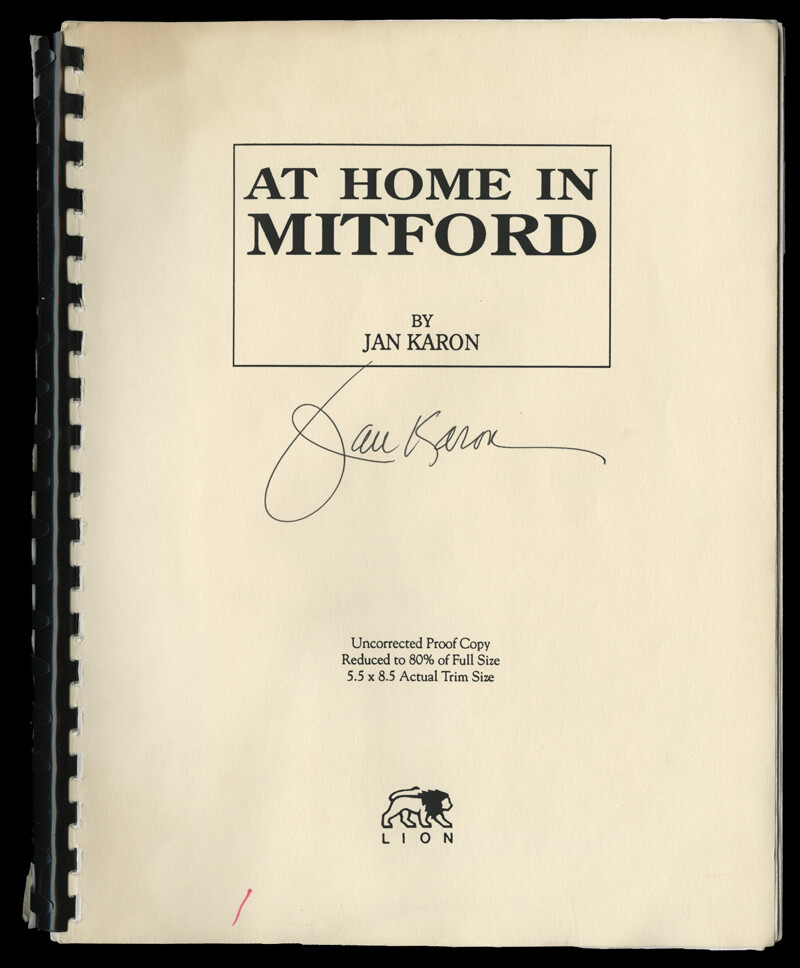
Jan Karon’s uncorrected proof copy of the first edition of “At Home in Mitford” (1992) (Box 1.2)
From Father Tim to Mitford
When Jan Karon transformed her “Father Tim” stories into a novel, she made an important decision: to remove his name from the title, and put the emphasis on Mitford itself. And while Father Tim remains the protagonist of most of the works that followed, Mitford is arguably the main character.
The Power of Place
Karon’s early files on the first novel show us that as she worked on the first Mitford novel, external feedback was valuable and productive. This fascinating early response to the Father Tim stories shows that from the very start, Karon succeeded at inventing a place readers wanted to inhabit. This reader, who is responding to a request for feedback on the series, notes that “using Father Tim as the central character around which all the action revolves is an adroit device, because the reader has the pleasant conviction that nothing happens in the town of Mitford that Father Tim would, sooner or later, not know of.” Father Tim is the beating heart of the town, through which everything flows, and without which it would not exist.
Notably, the reader’s main critique of the short stories is where the Mitford novels end up achieving great success: “Mitford could be placed more accurately — for example, is it in the mountains? Is there a river near town? Is it a farming center, a county seat, a conference or resort site?” Any reader of the novels knows that Mitford gains just such a fictive geography, answering all of these and many more questions about the nature of the Mitford universe.
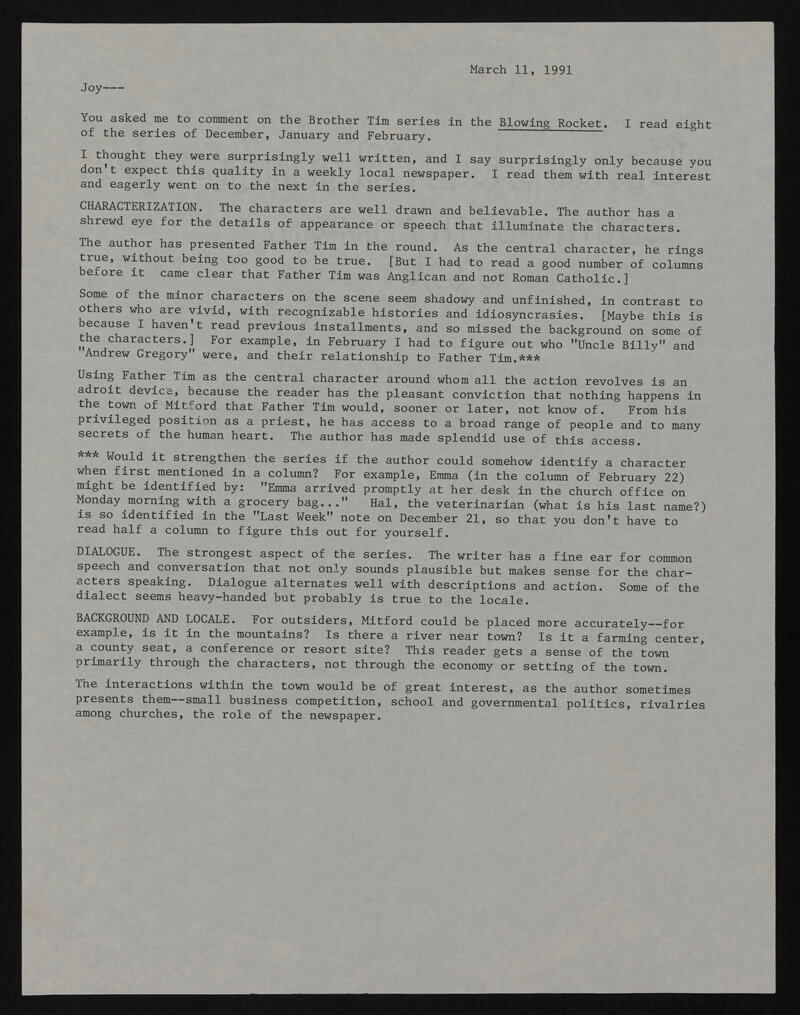
An unsigned note to “Joy” with comments on the Mitford serialization in The Blowing Rocket, ca. 1990-1991 (Box 60.4)
Envisioning Places and Spaces
Readers of the Mitford novels will learn much about their own role as worldbuilders when comparing Karon’s floor plans and landscape sketches with their own imagination of these spaces. The Mitford books are packed with conversations that take place as two or more characters move through specific spaces in Mitford, whether across a hedge, along a riverbank, down a sidewalk, or between the study and kitchen in the Rectory. Karon’s precise and consistent vision of the town’s spaces enables readers to build upon their own personal Mitford, realizing it more fully with each new book they read.
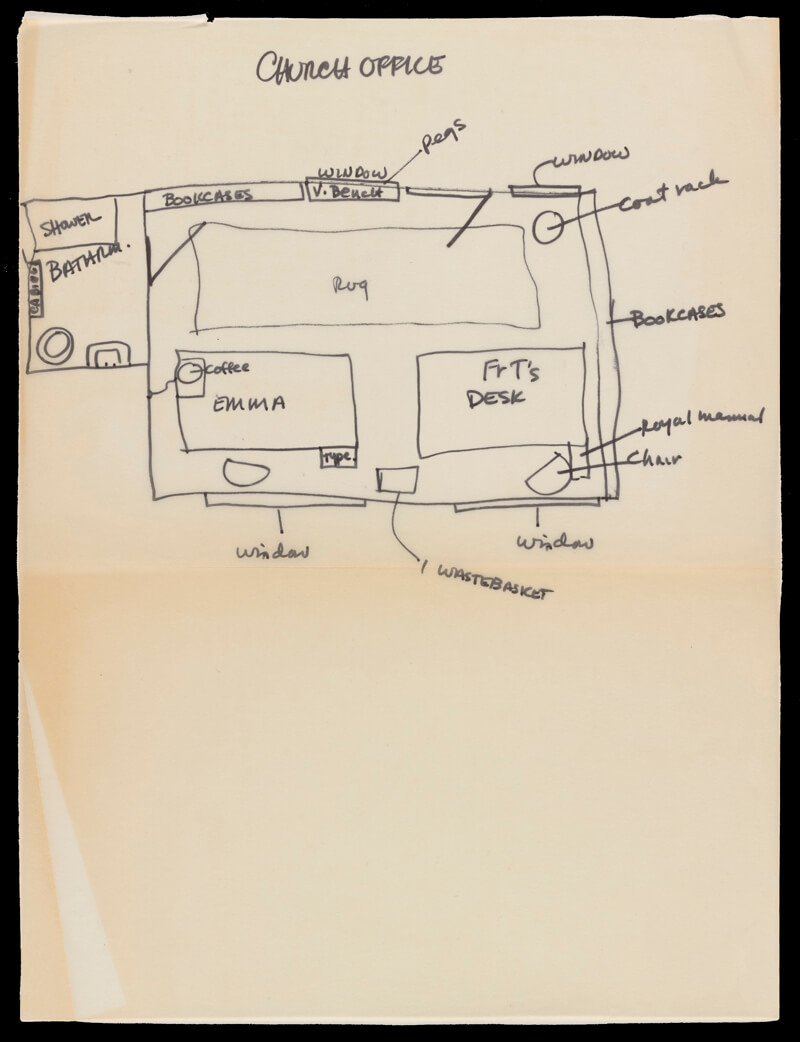
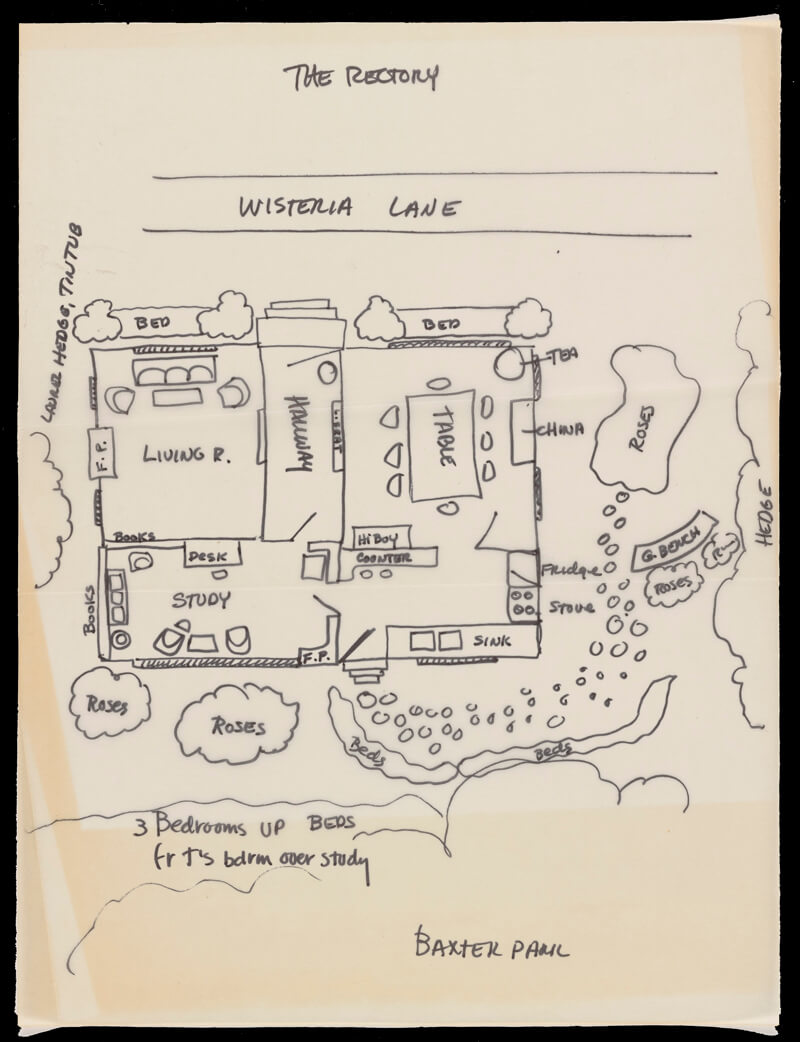
Jan Karon’s sketches of Mitford locations, featuring the “Church Office” and “the Rectory,” undated (Box 94.5)
A World Beyond the Books
The sense of familiarity, of welcoming, that Mitford readers often cite as part of the series’ appeal, translated to Karon’s development of the “More from Mitford” newsletter, which invited readers to enter Mitford as though it were a place one might point to on a map.
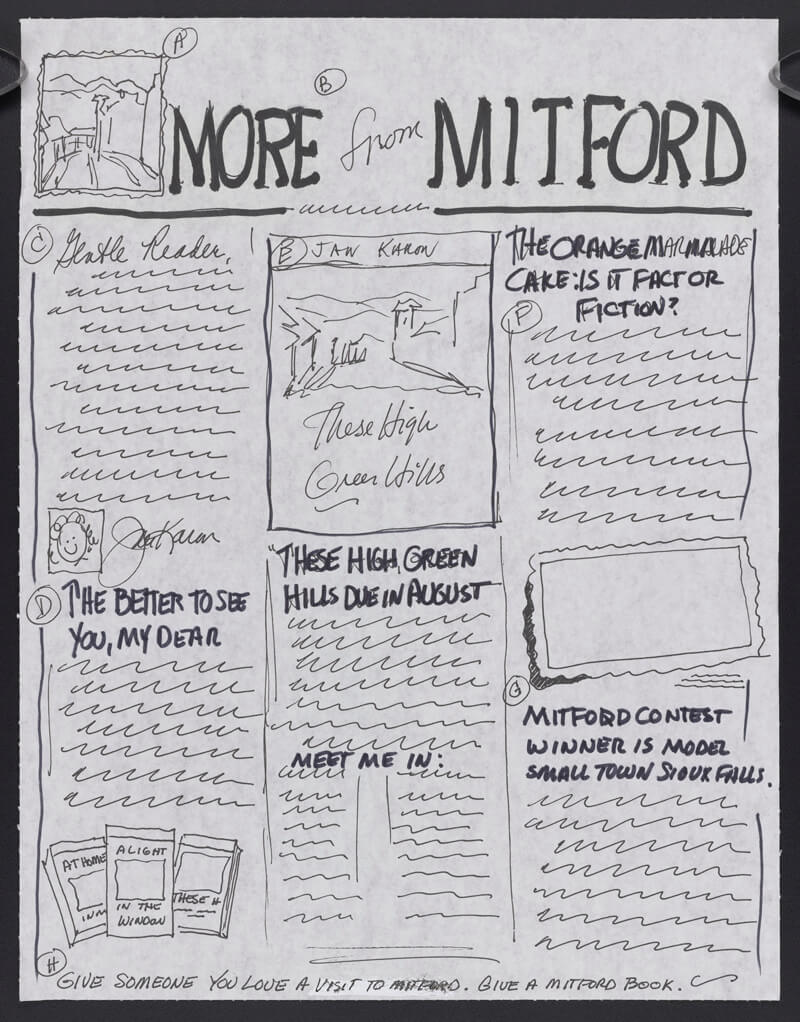
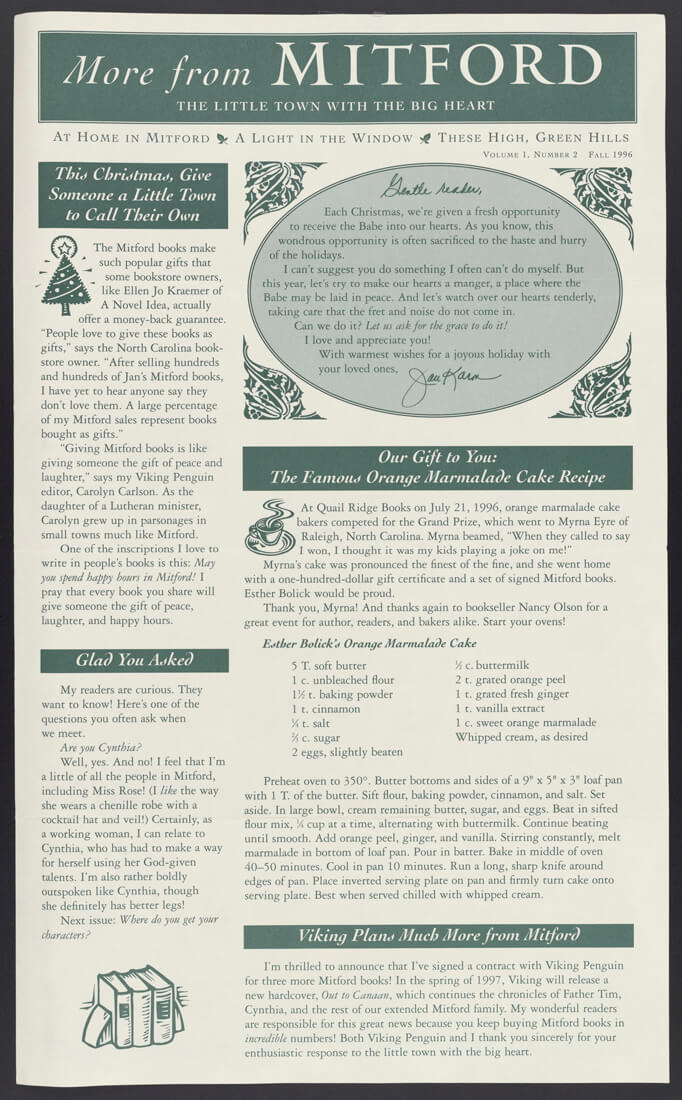
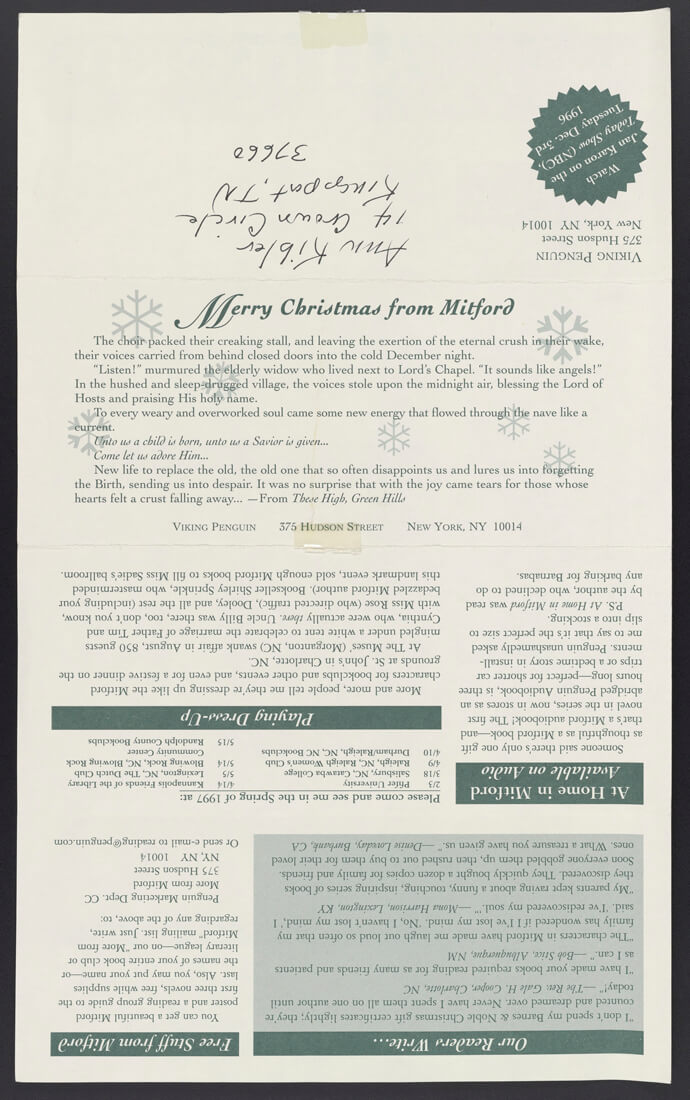
A mockup page of the Mitford newsletter, “More from Mitford,” in Karon’s hand (Box 94.3) and an example in print from 1996 (Box 94.2)
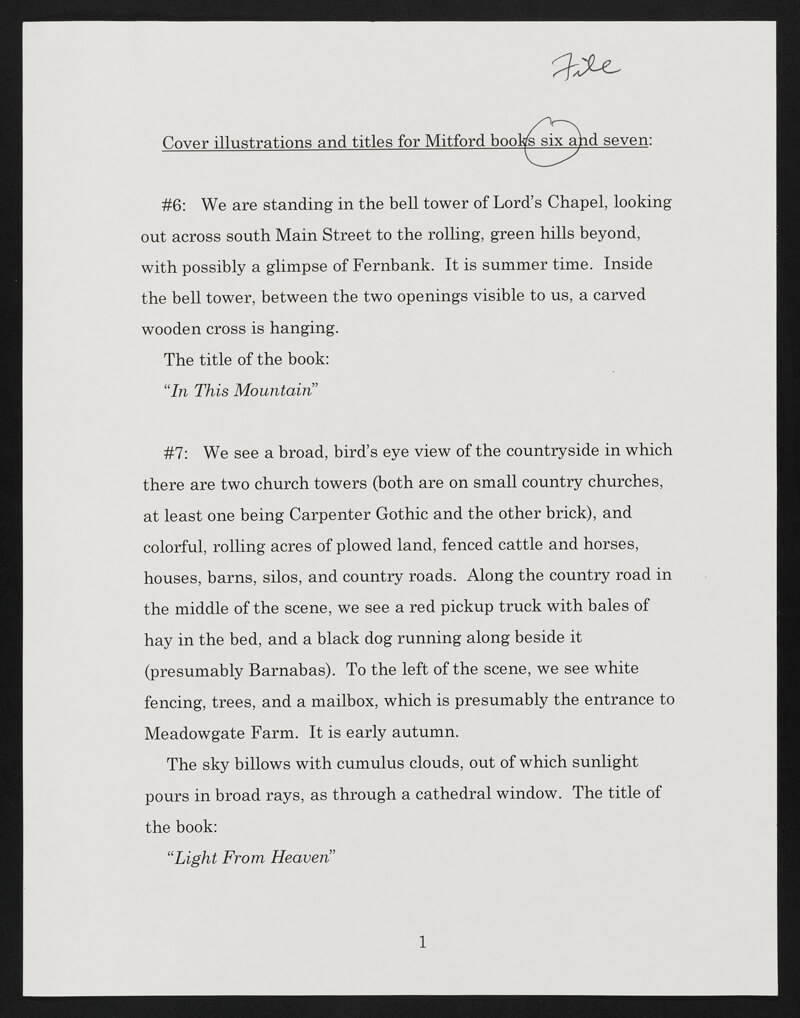
Jan Karon’s plans for book cover illustrations for the proposed sixth and seventh Mitford novels, which were to become “In This Mountain” and “Light From Heaven,” undated (Box 9:6)
Planning Ahead
Karon’s attention to the worldbuilding of her novels carried across sequel proposals and into the design of the books themselves. A book browser unfamiliar with the series might see the books’ covers and titles as bucolic and abstract, respectively. But as the descriptions here show, Karon envisions a specific landscape that would be recognizable to her readers. Looking ahead at two future books in the series, she constructs a remarkably precise physical — and spiritual — landscape for each cover. Notably, the final designs for both of these covers resemble these descriptions, but contain fewer Mitford-specific details.
Fan Worlds
Karon’s attention to the feel of Mitford — as both text and place — so resonates with readers that her process is reflected in fans’ own work. From fanart of Mitford characters to reader forums speculating on the relationship between plot developments and real history, Karon’s audience participates in the author’s inviting approach to worldbuilding. Karon’s interest in her readers’ interpretations is evident in her decision to keep artifacts like this, and to print out selected commentaries from online reader forums.
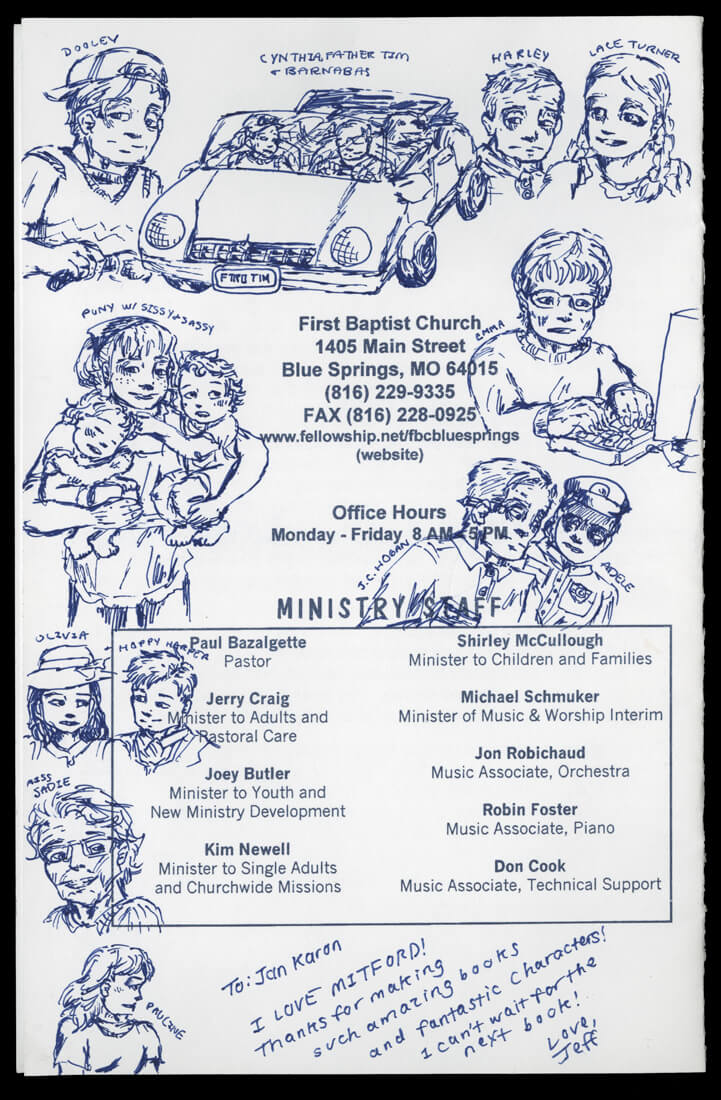
A church booklet featuring drawings of Mitford characters by a reader named Jeff, sent to Jan Karon and saved in her files, undated (86.3)
